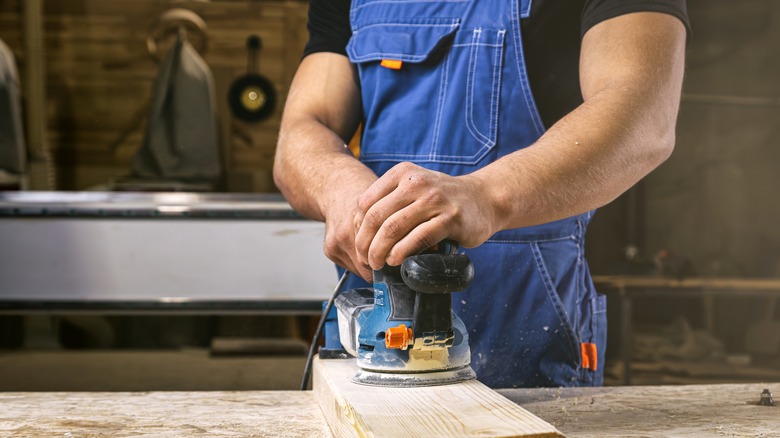The Woodworking Hack That Leaves Even Sanding On Any Home Improvement Project
Sanding is nobody's favorite woodworking task, so everyone welcomes a method that guarantees the best results while requiring the bare minimum time and effort. TikTok woodworker Jonathan Katz-Moses has taken a common sanding trick –- adding pencil marks to the surface to be sanded –- and distilled it down to the steps that are both necessary and sufficient for smoothing any wood project.
The idea of marking a piece that needs to have material removed is nothing new for woodworkers and machinists. Blue dye is usually used when working with metal, but pencil is the preferred marking medium for woodworkers who need to avoid staining their workpieces. Many woodworkers use pencil markings because, after sanding, low points in the wood's surface will still show pencil marks. Katz-Moses recommends a .5mm mechanical pencil, and many woodworkers recommend using a softer graphite, like this carpenter pencil from Harbor Freight for $0.69, to make lines that won't be difficult to remove, probably because the softer leads are less likely to make indentations in the wood. It also helps to use a random orbit sander to avoid patterned scratches; these are no longer prohibitively expensive, as we learned when we tried the cheapest mini sander at Home Depot.
How does the pencil hack work?
Let's have a look at the process to see why this works so well. Mark the entire surface with a light pencil scribble, then sand with 80-grit sandpaper at 1 inch per second, making sure all the pencil marks are gone. As the graphite disappears, you know not to go back over an area you've already sanded. Now, move up to the next finest sandpaper grit and repeat the process. Keep graduating through sandpaper grits until you're done. Katz-Moses recommends using 80-, 120-, 150-, and 180-grit paper, occasionally adding 220 grit as well. YouTube woodworking star Steve Ramsey says only three grits are necessary for most woodworking projects (80, 120, and 220), but Katz-Moses claims that sandpaper will struggle to remove the scratches made by the previous grit if you jump too far in smoothness. Besides, having extra sandpaper on hand is a good idea given all of sandpaper's uses that you're probably missing.
The magic of Katz-Moses' approach is that it forces you to do all the necessary work while forbidding doing too much. Over-sanding, especially with coarser sandpaper, can cause low spots in the material's surface, one of the very things you're trying to eliminate. Sand exactly as much as necessary to remove the surface pencil marks, usually at about 1 inch of sanding per second, and then don't go over a sanded area again. As you work through finer and finer grits, a smooth surface ready for finishing should emerge.
